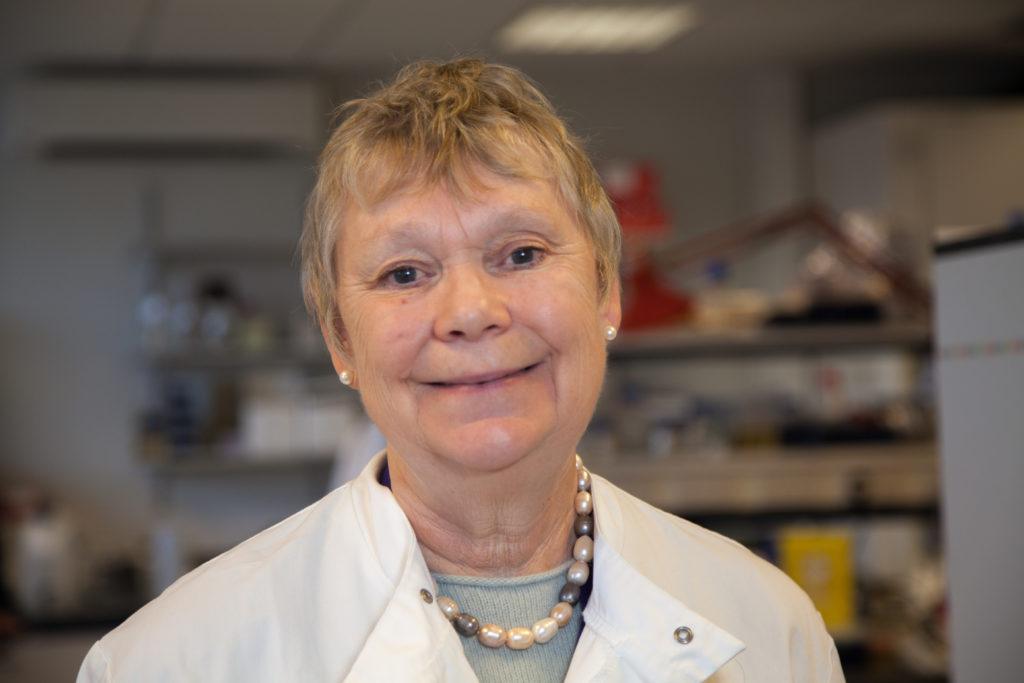Ovarian Cancer Awareness Month
Q&A with Professor Fran Balkwill
March is Ovarian Cancer Awareness Month. Ovarian cancer is the sixth most common cancer in females in the UK, with approximately 7,400 new cases diagnosed each year. Sadly, there are around 4,100 ovarian cancer deaths in the UK annually, that's 11 every day1.
 In recognition of Ovarian Cancer Awareness Month, we spoke to Fran Balkwill, Professor of Cancer Biology in the Centre for Tumour Microenvironment at the Barts Cancer Institute, Queen Mary University of London. The main aim of Professor Balkwill’s research is to understand the tumour microenvironment of ovarian cancer, i.e. not just the malignant cells but other ‘normal’ cells that are recruited by the cancer to help it grow and spread. Professor Balkwill and her team hope that this understanding will allow for the identification of biological therapies that can make existing treatments more effective and prevent recurrence of the disease.
In recognition of Ovarian Cancer Awareness Month, we spoke to Fran Balkwill, Professor of Cancer Biology in the Centre for Tumour Microenvironment at the Barts Cancer Institute, Queen Mary University of London. The main aim of Professor Balkwill’s research is to understand the tumour microenvironment of ovarian cancer, i.e. not just the malignant cells but other ‘normal’ cells that are recruited by the cancer to help it grow and spread. Professor Balkwill and her team hope that this understanding will allow for the identification of biological therapies that can make existing treatments more effective and prevent recurrence of the disease.
Why is Ovarian Cancer Awareness Month important?
Ovarian cancer is the most serious of the gynaecologic cancers and often difficult to detect in the earliest stages. Awareness of the disease and its symptoms are both very important.
What do you think are the main challenges we face in the treatment of ovarian cancer?
The first challenge is that there are at least five types of ovarian cancer that require different approaches to early detection and treatment. The second challenge is that ovarian cancer usually has no symptoms until the disease has spread quite widely making it more difficult to treat. Third, although some ovarian cancers, especially the most common subtype (high-grade serous) respond well to chemotherapy, the disease returns and can be more difficult to treat at this stage. The fourth challenge is that ovarian cancers do not seem to respond to some of the new immunotherapies that may be helpful in other cancers, but we do not understand why this is. Finally, until recently there have been few models of ovarian cancers for pre-clinical experiments that can be used to test new approaches to treatment. However, we and others now have better models – not only mouse models but also 3D human cell models – mini-tumours that we can grow in the lab. We think this will help us better understand the tumour microenvironment and how to prevent it stimulating the malignant cells.
What do you anticipate will change in the next 5 years in terms of ovarian cancer treatment?
Drugs called PARP-inhibitors are looking promising for some women especially with the high-grade serous type of ovarian cancer. In the longer run, I think that biological therapies (that exploit the biology of the disease – e.g. novel immunotherapies, drugs that target the blood vessels) will make a strong impact - that is the strong belief that drives our research.
How has your research continued from home during the Covid-19 outbreak?
I am busier than ever! We have a lot of experimental data to analyse, research papers to write and planning the next experiments for when we get back to the lab. I have daily virtual meetings with my group and other colleagues using Zoom and Skype. Morale is high and we are determined to make the most of this time away from the lab bench.
1Cancer Research UK, https://www.cancerresearchuk.org/health-professional/cancer-statistics/statistics-by-cancer-type/ovarian-cancer, Accessed March 2020.
Category: General News, Interviews

No comments yet